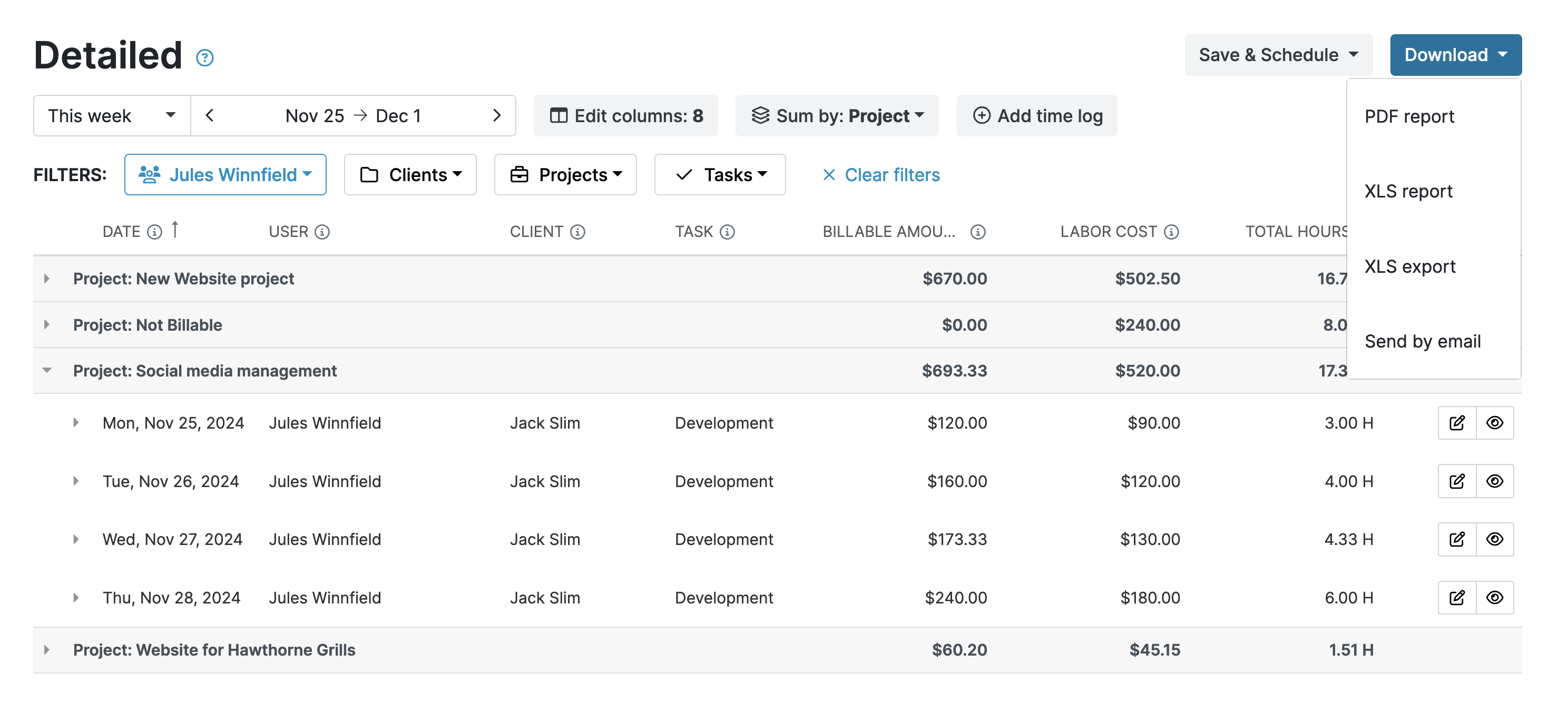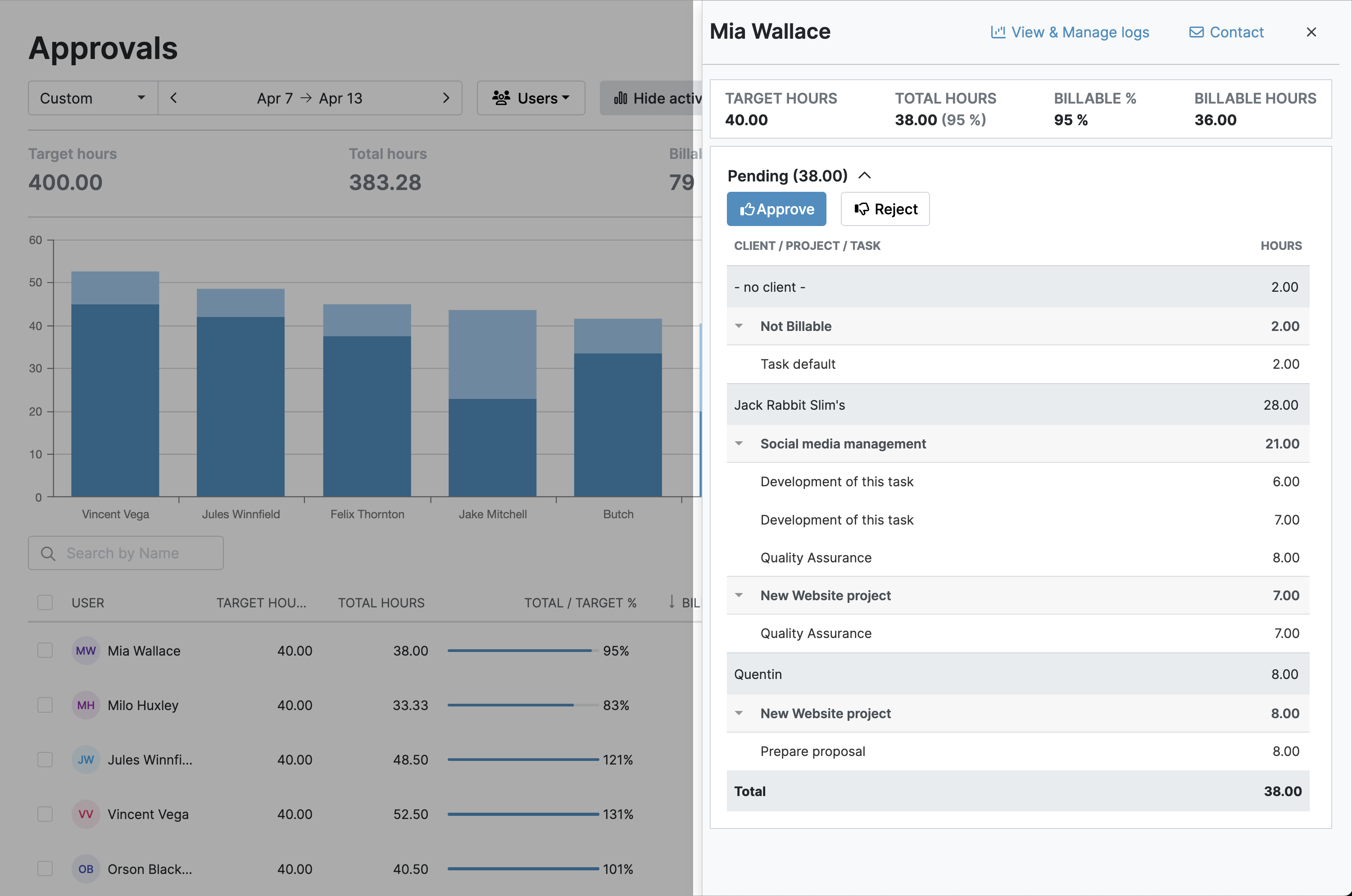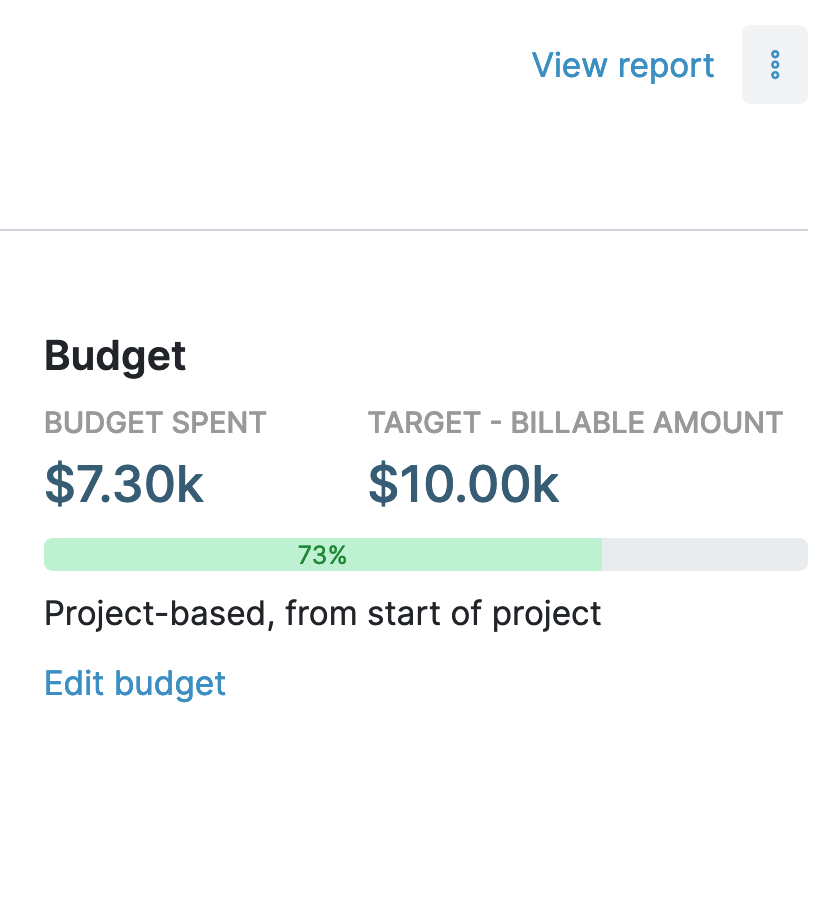Ease of use. Simplicity in design. Reliability. Overall, My Hours is great at time tracking, expenses, auditing, and reporting.
- Ariel T., Outsourcing/Offshoring
Track Billable and Non-Billable Hours
Inter-departmental billing has become standard practice for tracking CapEx and OpEx costs and measuring profitability.
My Hours simplifies this process by letting you set unique billing rates for:
- Users: Track the billable amount for each time entry based on the individual’s hourly labor rate.
- Task or project: Set specific hourly rates for tasks or projects.
- Non-billable work: Assign to all activities not subject to inter-departmental billing, like general admin work. Set this option at the project, task, or timelog level.
You can also set a default hourly rate per user, but override the rate for specific projects and deliverables that have unique hourly fees.
These flexible rate options help you bill each department accurately for the actual work performed.

My Hours helps me track how I use my working time. I use the data to optimize my business performance, to maximize my billable hours, and to stay on track with my business goals.
- Nancy S., Public Relations and Communications
Powerful Custom Fields and Tags
My Hours lets you create custom tags to label projects and tasks as CapEx or OpEx.
This lets you accurately track and report hours by expense type, and supports proper cost allocation across your organization. You can also:
- Add custom fields to time logs, clients, projects, tasks, and users.
- Use custom fields to capture specific data points like billing codes, types, locations, or any other data relevant to your workflow.
- Use custom tags to add additional labels, like department, billable vs. non-billable, and so on.
This flexibility captures exactly the information you need, without resorting to complex workarounds.
Note: Administrators can add tags to timelogs in bulk.

Project-Based Budget Tracking
Create separate projects for capital projects versus operational work and set individual budgets for each.
- Budgets can be time-based or cost-based, depending on the project’s priorities and billing structure.
- Set hourly budgets or fixed-fee budgets at the project level.
- Use task-level budgets for more detailed progress monitoring.
- Automated alerts notify users when a certain budget percentage is spent, allowing teams to reallocate resources or adjust timelines as needed.
By tracking budgets at both the project and task levels, you gain actionable insights that help improve future budget allocation and expenditure.

Simple Expense Allocation
Both CapEx and OpEx expenditures extend beyond labor. Other expenses can quickly add up unless they are correctly tracked and allocated.
My Hours lets you assign expenses directly to the relevant timelog, so they are classified correctly and billed to the right department:
- Add expenses to timelogs and label them as billable or non-billable.
- Upload receipts and invoices as proof of expenditure.
- Use the description field to add more detail if necessary.
- Assign an “Expenses” tag to enable expense filtering when creating reports.

One-Click Reporting and Data Export
With the My Hours reporting feature, you can break down hours and labor costs by CapEx vs. OpEx.
- Filter data by relevant tags and custom fields to get precisely the information that matters most.
- Export reports to Excel or PDF in one click to satisfy finance teams and auditors.
- Save reporting preferences to generate future reports in one click.
- Use the automatic scheduling feature to email stakeholder reports on time, every time.
Example: A construction company might use the CapEx vs. OpEx breakdown report to track how much of its labor spend goes toward building a new facility (CapEx) versus ongoing maintenance (OpEx) for accurate accounting and budget control.

Accurate Forecasting Capabilities
Use the My Hours detailed report to make better and more accurate predictions for future projects.
By analyzing historical CapEx and OpEx data, you can gain insight into the profitability of past projects and how resources were allocated.
Use this information to prepare for future projects by comparing actual data to planned data and making adjustments accordingly. For example:
- Historical data reveals removable time sinks and bottlenecks, such as excessive hours spent on tasks that don’t contribute to profitable outcomes.
- Pinpoint the tasks and project types that deliver the highest returns so you can allocate more resources in those areas.
- Compare forecasted budgets vs. actual expenditure to refine cost estimates and avoid budget overruns.
Approval Workflows for Compliance
My Hours features simple controls and workflows for timesheet approvals to ensure that all CapEx and OpEx data is present and correct:
- Create a timesheet approval hierarchy that specifies who can check and approve timesheets.
- After a timesheet has been approved, the automatic locking mechanism prevents retroactive alterations and entries.
- Automated alerts flag incomplete timesheets to users, prompting them to complete the information and avoid non-compliance.
My Hours includes a full audit trail that records all changes, no matter how small, providing full transparency for compliance reviews.

Try My Hours for Free
My Hours delivers detailed cost classification without any extensive setup processes or challenging workarounds.
Trusted by over 100,000 clients, My Hours combines round-the-clock expert support with enterprise-level security backed by ISO 27001 certification.
Start your free 14-day trial today and experience the difference My Hours makes.
My Hours is an easy-to-use software for tracking time spent on projects. We use this primarily for tracking time spent on customer projects, but have also used this for internal tracking needs. The best thing about My Hours is how little I have to think about it; it just works and for a very affordable price.
- Eddie B., Information Services

